Cold Pressed Organic Safflower Oil
SAFFLOWER OIL SEED IS ONE OF THE MOST ANCIENT OIL CROPS USED FOR EXTRACTION OF EDIBLE OIL IN INDIA.
What is safflower oil?
When you overheat cooking oil, it destroys beneficial compounds and creates harmful free radicals. Those free radicals can damage molecules in your body. That’s why it’s important to use oils with a high smoking point when you’re cooking at high temperatures.
If you’re looking for a cooking oil that’s suitable for high heat, safflower oil may be the right choice for you. It has a higher smoke point than corn oil, canola oil, olive oil, sesame oil, and many other alternatives. It also has a neutral flavor, making it an ideal choice for many recipes.
Safflower is a tall plant with spiked leaves and yellow or orange flowers. The flowers were used as a dye for clothing in ancient Egypt. Today, some people use safflower petals as a substitute for saffron, a yellow spice that’s often used to color and flavor rice dishes. Safflower seeds are also used to produce safflower oil.
Two varieties of safflower oil are available: high-linoleic and high-oleic. High-linoleic safflower oil is rich in polyunsaturated fats, while high-oleic safflower oil contains more monounsaturated fats. Polyunsaturated safflower oil is good for unheated foods, such as vinaigrettes. Monounsaturated safflower oil is good for cooking at high temperatures.
Is safflower oil good for you?
When used in moderation, safflower oil is a healthful addition to a well-balanced diet. While research is still in its early stages, safflower oil shows a lot of potential when it comes to health benefits. Your body needs fat to function properly, but some sources of dietary fat are healthier than others. Safflower oil is a rich source of monounsaturated and polyunsaturated fatty acids, which the American Heart Association (AHA) calls “good fats.” In contrast, it contains relatively little saturated fat, which the AHA calls “bad fat.”
A study published in Clinical Nutrition suggests that daily doses of safflower oil may help improve blood sugar, blood cholesterol, and inflammation levels in people with type 2 diabetes. The AHA also suggests that unsaturated fatty acids can help lower bad cholesterol in your blood.
Try using safflower oil in your cooking, instead of butter or other partially hydrogenated oils. Monounsaturated safflower oil is ideal for cooking at high temperatures, while polyunsaturated safflower oil is better suited to raw preparations or cooking over low heat.
Safflower oil even has some cosmetic uses. For example, some people use it as a moisturizer for dry skin or a carrier oil for aromatherapy scents.
Did someone say fried food?
If you crave something deep-fried every now and then, monounsaturated safflower oil is one of the best oils for the job. Unlike virgin olive oil, it can withstand high temperatures. Here are some tips for using monounsaturated and polyunsaturated safflower oil in your kitchen.
Monounsaturated safflower oil
With its high smoke point, monounsaturated safflower oil is one of the best choices for cooking at high temperatures. If you want to indulge in deep-fried foods occasionally, consider using foods that are rich in vitamins and minerals, such as zucchini or a medley of vegetables in tempura batter. You can also use safflower oil to make French fries or sweet potato fries. Those starchy vegetables soak up a lot of oil, so keep your portion sizes small.
To fake deep-fried dishes and cut empty calories from your diet, consider making oven-baked alternatives. For example, prepare oven-fried chicken or potato wedges, using just use enough monounsaturated safflower oil to keep the food from sticking to your baking sheet.
You can also use monounsaturated safflower oil to cook eggs, stir-fries, and other sautéed dishes. It can be used instead of olive oil in many recipes. While olive oil also contains healthy unsaturated fats, safflower oil has a milder flavor and can be heated at higher temperatures. That makes it a more appealing option sometimes.
You can even use monounsaturated safflower oil while baking. For example, add it to any baked goods recipe that calls for oil. Or use it as a substitute for butter or shortening in baked goods. Substitute ⅓ cup of safflower oil for ½ cup of solid fat. The texture of the final product may be slightly different.
Polyunsaturated safflower oil
For salad dressings, other raw recipes, and dishes that you prepare over low heat, try polyunsaturated safflower oil. But remember, this delicate oil can turn rancid quickly. Always store it in a cool dark place or your refrigerator.
The takeaway
Safflower oil is a rich source of unsaturated fatty acids, which are often called “good fats.” It’s every bit as healthy as olive oil and canola oil. But it has less flavor than those alternatives and is often less expensive. It also has a higher smoke point than many vegetable oils, making it an ideal choice for cooking at high temperatures.
There are many benefits to safflower oil. But like all oils, it’s high in calories and low in vitamins and minerals. Enjoy it in moderation as part of a well-balanced diet — and limit deep-fried foods and high-fat baked goods to the occasional treat.



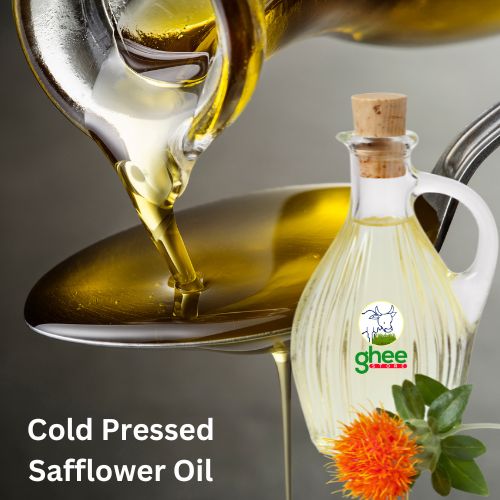
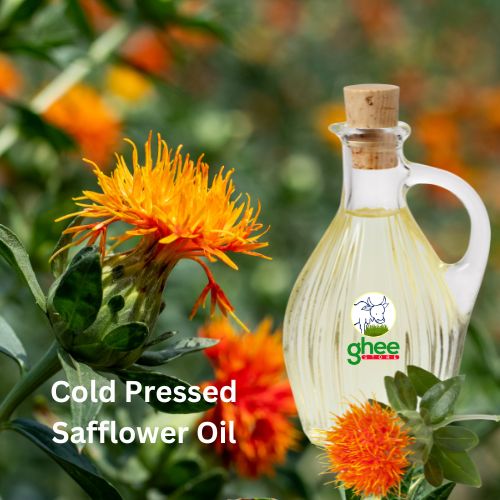
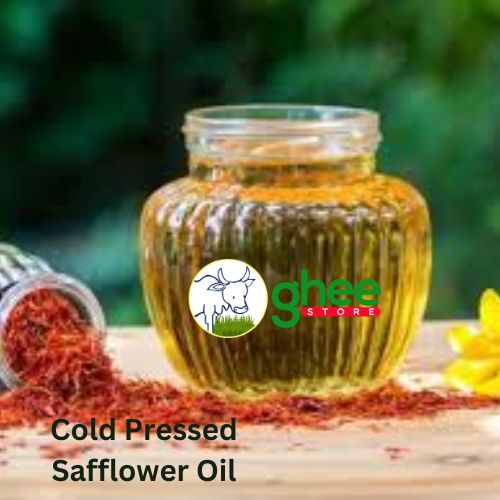
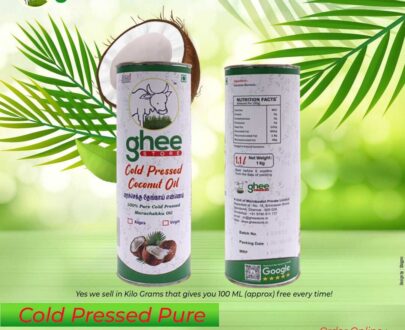
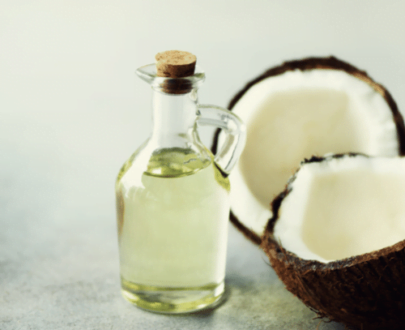
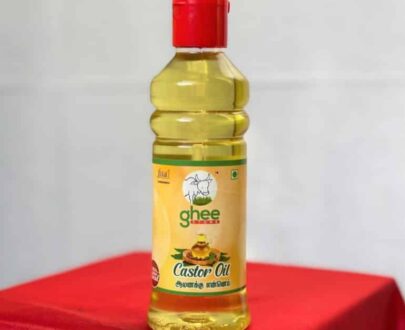
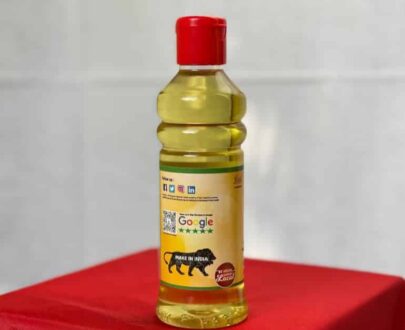
Customer reviews
1 review for Cold Pressed Safflower Oil
(verified owner)
I recently purchased the Cold Pressed Organic Safflower Oil from GheeStore, and I couldn’t be happier with my choice. The oil has a light, pleasant flavor that enhances the taste of all my dishes. It’s great for both cooking and salad dressings. I appreciate that it’s organic and cold-pressed, ensuring that all the nutrients are preserved. The 1.4 kg size is perfect for my household needs. This is definitely a premium product worth every penny!
Only logged in customers who have purchased this product may leave a review.